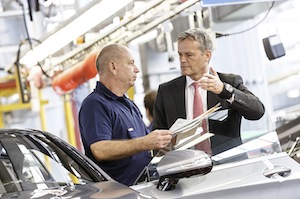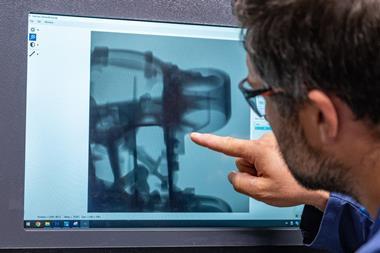 Germany – The sum spent this year includes €1 billion ($1.2 billion) at Sindelfingen, mostly for future projects; another billion went to Untertürkheim for the expansion of engine production. Capabilities at Bremen are being improved with €750m, while further investment was also made at the Rastatt compact car plant, where the B-Class electric drive has been integrated into series production.
Germany – The sum spent this year includes €1 billion ($1.2 billion) at Sindelfingen, mostly for future projects; another billion went to Untertürkheim for the expansion of engine production. Capabilities at Bremen are being improved with €750m, while further investment was also made at the Rastatt compact car plant, where the B-Class electric drive has been integrated into series production.
The brand is realigning its global passenger car manufacturing activities; the new manufacturing organisation, Mercedes-Benz Operations (MO), is based on international production networks with centralised responsibility for logistics and quality.
“Under our previous production structure, the individual plants operated largely autonomously,” explained Markus Schäfer, member of the divisional board of Mercedes-Benz Cars, Production and Supply Chain Management. “Now, manufacturing will be organised according to product architectures, independent of individual locations.” These include rear-wheel drive architecture (MRA), front-wheel-drive architecture (MFA), architectures for SUVs (MHA) and sports cars (MSA), plus powertrains (MPA).
“We want to continue to grow and will significantly increase our production capacities in the coming years,” explained Schäfer. “At the same time, we want to permanently and sustainably strengthen our competitiveness with a high-performance organisation.”
In 2014 alone, the OEM is managing 18 vehicle ramp-ups at eight locations worldwide, including the start of C-Class sedan production in four continents. Up to 2020, Mercedes-Benz will introduce 12 models with no predecessors.




































